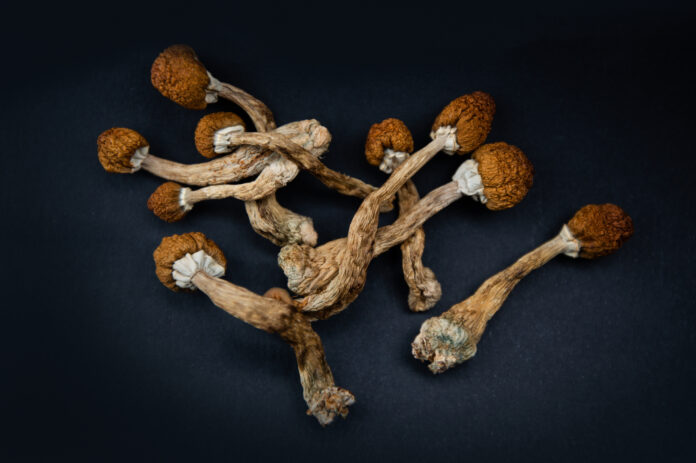
A research review published this month in the Journal of Psychiatric Practice shows that a growing body of evidence suggests that psilocybin could be an effective treatment for depression.
“At a time of growing excitement regarding the potential use of psychedelic agents to improve outcomes of otherwise intractable disorders, psychiatrists and patients alike need perspective on the current state of the evidence and the prospects moving forward,” noted lead author Amir Garakani, MD, of Greenwich Hospital, Greenwich, CT, and the Department of Psychiatry at the Yale School of Medicine.
Psilocybin is the psychedelic substance that is found in “magic mushrooms.” Recent clinical trials have shown positive effects of treating patients with a range of doses of psilocybin for the treatment of major depressive disorders (MDD) and treatment-resistant depression (TRD). The evidence was strong enough that the U.S. Food and Drug Administration (FDA), granted psilocybin as a breakthrough therapy for the treatment of both MDD and TRD.
Writing in the research review, Garakani and colleagues noted that the therapeutic responses from psilocybin “stem from, or at least go hand-in-hand with, an intense emotional or mystical experience.” Studies suggest that psilocybin leads to increased “openness to experience” and psychological flexibility—enabling patients to “reconsider stereotyped perspectives and move beyond accustomed patterns of thinking.”
Research into the effects of the psychedelic substance suggest that it increases activity between brain networks without a corresponding increase within single networks. Changes in brain network flexibility have linked to lasting reductions in depression symptoms.
Like many approved drugs for depression, all psilocybin treatment studies have included the subjects receiving psychotherapy, including preparation, dosing and integration phases. The authors noted that these studies encourage participants to “stem from, or at least go hand-in-hand with, an intense emotional or mystical experience.” Studies have shown that these treatments lead patient to increased openness to experience, as well as psychological flexibility, which aid patients to “reconsider stereotyped perspectives and move beyond accustomed patterns of thinking.”
Studies of psilocybin have been conducted across a range of dosing strategies including microdosing (0.1–0.5 g of dried mushroom, or 0.8–5 mg of synthetic psilocybin), mid-range dose (2–2.5 g of dried mushroom, or 10–16 mg of synthetic psilocybin) and high dose (3-5 g of dried mushroom, or 20–30 mg of synthetic psilocybin). Microdosing falls below the amounts that would lead to intoxication, while mid-range and high dose amounts produced intoxication. The authors note that studies are following highly controlled protocols among carefully selected populations that pay special attention to maximizing patient safety.
A large number of psilocybin clinical trials are planned or currently in progress that are seeking to gain approval for its use to treat MDD, TRD and other conditions that include cancer-related anxiety and PTSD… “The large number and wide-ranging scope of ongoing and future psilocybin trials not only show the interest in this drug in the scientific community but also the potential therapeutic role of psychedelics across diagnoses and clinical domains,” the researchers write.
Currently, psilocybin remains a Schedule I controlled substance under federal law in the U.S., despite its breakthrough therapy designation by the FDA. Earlier this year, regulators in Australia approved its use for the treatment of TRD.
The American Psychiatric Association’s official stance on psilocybin is that there is currently not enough scientific evidence to support its use for the treatment of any psychiatric disorders, but Garakani and associates contend that their research review demonstrates that there is potential for their use in the future.
“Psilocybin has demonstrated promise as a novel therapeutic and offers new perspectives on the function and dysfunction of the brain. “[I]t remains to be seen if the current clinical, legal, and research landscapes will allow delivery on that promise,” the researchers concluded.













